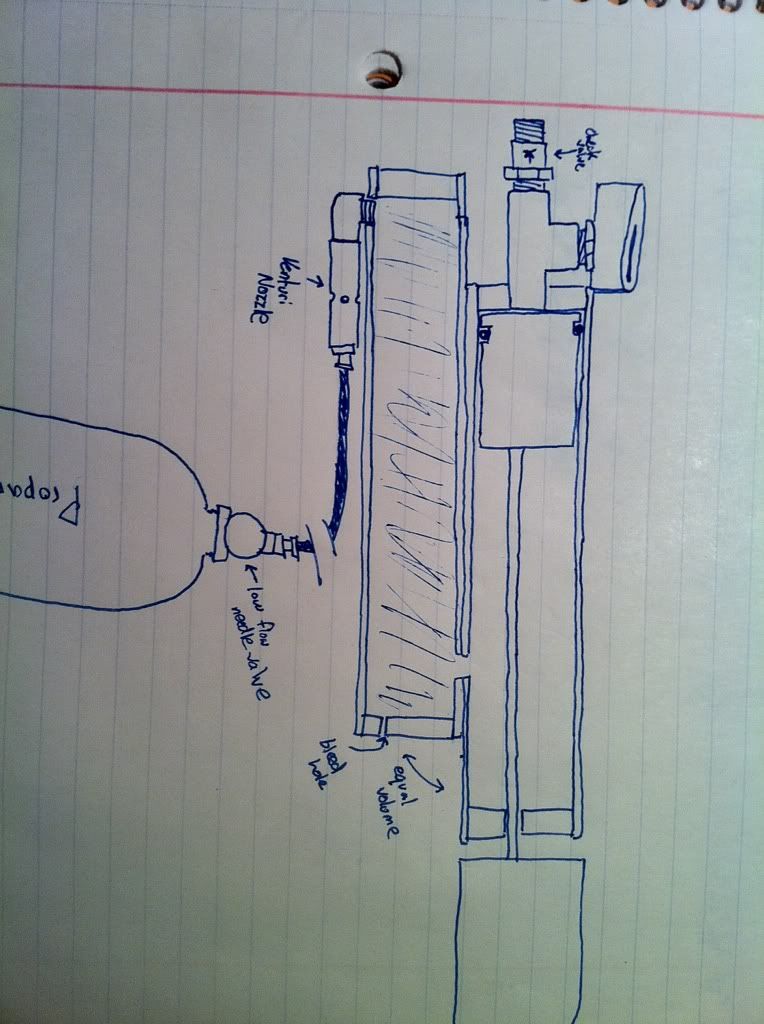The 'u' made of two pieces of copper is not a venturi, the venturi is the stock one in the jet lighter. This won't work with a regular lighter. The pipe is open on the end, so that (ignoring the small amount of back pressure from the length of pipe) there will always be a correct fuel air mixture because the venturi is functioning as it normally would. The pipe is simply a reservoir with an equal volume on each side of the pump inlet to ensure that the pump is only taking in the fuel air mix.
The later version pictured with a propane torch and bottle (open through the nipple on the bottom, just can't see it) works exactly the same way.
If you connected a hose directly with no vent you would get a rich mix, and if you had a hose connected directly with a vent hole adjacent to the inlet hole, you would suck in too much air and get a lean mix.
This is not the most efficient means of fuelling, because you lose some that is not captured by the pump. But it is a very simple way to achieve a range of high mixes, which as JSR said is determined by the pressure you pump it to, with no measuring required. In the end because of my ghetto fab job, it proved unreliable, but I have no doubt that it could be made reliable with better construction techniques. However, I found a few drops of starter fluid on a schrader followed by straight air from the shock pump ended up being even simpler with less misfires due to the wide air/fuel combustion range of ether in the starter fluid. I probably won't revisit it as I've moved on to real firearms, but someone should try to combine the two ideas - taking out the step of manually dropping the fluid in.
Then again, there are some really annoying birds out back that I would like to pay a visit from a suppressed small caliber suitable for urban use, and I do have access to a cnc mill now..
JSR, glad to see your sense of humour hasn't changed





